Every year, thousands of motorcycles are pulled off the road because of safety defects. These aren’t minor glitches - they’re problems that can cause crashes, fires, or loss of control at highway speeds. If you ride a motorcycle, you need to know what’s being recalled, why it matters, and how manufacturers are (or aren’t) handling it.
Why Motorcycle Recalls Happen
Recalls don’t happen because companies are careless. They happen because something went wrong in design, manufacturing, or quality control - and someone got hurt. The most common reasons for motorcycle recalls involve brakes, fuel systems, electrical wiring, and steering components.
In 2024, the National Highway Traffic Safety Administration (NHTSA) reported over 180 motorcycle recalls in the U.S. alone. Nearly half of them involved brake failures. One model had a caliper that could crack under heavy use, leading to sudden loss of braking power. Another had a fuel line that chafed against the frame, causing leaks that sparked fires during rides. These aren’t hypotheticals. Real riders were injured. Some didn’t survive.
Manufacturers don’t always catch these issues themselves. Often, it’s riders reporting strange noises, smells, or handling problems that trigger investigations. Consumer complaints, mechanic reports, and insurance claims all feed into the system. Once enough evidence piles up, NHTSA opens a probe - and if it confirms a safety risk, a recall is issued.
Top Safety Issues Leading to Recalls
Not all defects are created equal. Some are rare. Others are widespread. Here are the top five issues that have triggered the most motorcycle recalls over the last three years:
- Brake system failures - including worn pads, leaking fluid, or faulty master cylinders. These affect everything from sport bikes to cruisers.
- Fuel tank and line leaks - often caused by poor routing or substandard materials. Heat from the engine can melt or weaken lines over time.
- Electrical shorts - especially in aftermarket accessories or poorly sealed connectors. These can lead to battery fires or sudden engine shutdowns.
- Steering head bearing wear - a silent killer. Bearings that wear out cause wobble at high speeds, making control nearly impossible.
- Chain tensioner or sprocket defects - if the chain snaps mid-ride, you’re going down. Some models had tensioners made from brittle metal that fractured without warning.
These aren’t random failures. They’re patterns. For example, a 2023 recall affecting over 12,000 bikes from a major Japanese brand was traced back to a single supplier of brake calipers that used incorrect heat treatment. The same part was used across five different models. That’s systemic.
How Manufacturers Respond - and When They Don’t
When a recall is issued, manufacturers have two choices: act fast and transparently, or drag their feet and hope no one notices.
The best responses come from companies like Harley-Davidson and BMW Motorrad. They send direct emails to registered owners, post clear recall notices on their websites, and even offer free pickup and delivery for service. Some include a loaner bike while yours is being fixed. They treat it like a responsibility - not a legal obligation.
Others? Not so much. One European brand waited six months after NHTSA issued a preliminary finding before sending out recall notices. By then, two riders had crashed. The company’s first communication? A generic letter saying “we’re reviewing customer feedback.” No details. No timeline. No urgency.
And then there are the gray areas. Some manufacturers issue “service bulletins” instead of recalls. These aren’t mandatory. Riders aren’t notified. Dealers aren’t required to fix them unless the owner brings the bike in. That’s a loophole - and it’s dangerous.

What You Should Do Right Now
If you ride a motorcycle, you need to check for recalls - even if you bought it used. Here’s how:
- Go to NHTSA’s recall lookup tool and enter your 17-digit VIN. You’ll find it on your title, registration, or on a plate near the steering head.
- Check the manufacturer’s website. Look for a “Recalls” or “Owner Support” section. Many list recalls by model and year.
- Call your local dealership. Ask if your model has any open service bulletins. Don’t assume they’ll tell you unless you ask.
- Sign up for recall alerts. NHTSA lets you register your vehicle and get email or text notifications when new recalls are issued.
Don’t wait for a letter. Many riders never get one. If your bike was recalled in 2022 and you bought it in 2024, you’re still at risk. Recalls don’t expire. The fix is free - even if you’re not the original owner.
What Happens When You Get a Recall Notice
Once you know your bike is affected, here’s what to expect:
- You’ll be told exactly what part is defective and why it’s dangerous.
- The manufacturer will direct you to an authorized dealer for a free repair.
- They should cover all labor and parts - no hidden fees.
- You may be offered a loaner bike or rental reimbursement if the repair takes more than a day.
- The repair should be completed within a few days. If it’s not, call the manufacturer’s customer service line - don’t wait.
Some repairs are simple: a new brake line, a tightened connector, a replacement bolt. Others require major disassembly. Either way, it’s free. Don’t let a dealer tell you otherwise. If they charge you, file a complaint with NHTSA immediately.
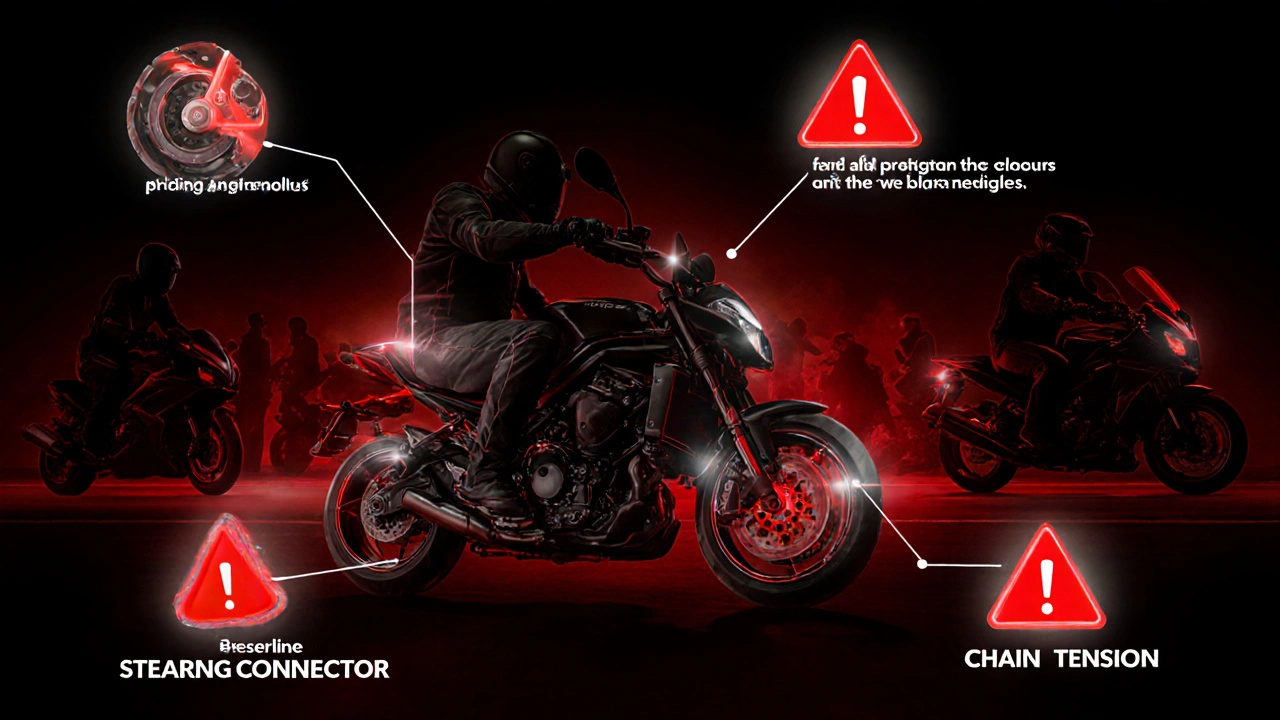
What You Can Do If a Recall Is Ignored
What if your bike has a known defect - but no recall has been issued? What if you’ve reported the same problem to the manufacturer three times and got silence?
You have rights. File a complaint with NHTSA. Go to their website and submit a detailed report: model, year, VIN, what happened, when, and any photos or repair receipts. If three or more people report the same issue, NHTSA is legally required to investigate.
There’s power in numbers. In 2023, over 500 complaints about a specific model’s throttle cable snapping led to a recall of 8,700 bikes - six months after the first report. That’s how change happens.
Why This Matters Beyond Your Bike
Motorcycle safety isn’t just about you. It’s about everyone on the road. A bike that suddenly loses brakes or catches fire doesn’t just endanger the rider. It puts cars, pedestrians, and other riders at risk. Manufacturers have a duty to fix these problems - not just to avoid lawsuits, but because people’s lives are on the line.
When you act on a recall, you’re not just protecting yourself. You’re helping make the roads safer for everyone. And when you hold manufacturers accountable, you push the whole industry to do better.
Don’t ignore a recall notice. Don’t wait for someone else to fix it. Your life - and the lives of others - depend on it.
How do I check if my motorcycle has an open recall?
Go to the NHTSA website and enter your 17-digit VIN number. You can find this on your title, registration, or on a metal plate near the steering head. You can also check the manufacturer’s official website under "Recalls" or "Owner Support." Don’t rely on dealers to notify you - many don’t.
Are recall repairs free even if I bought the bike used?
Yes. Recalls are free for any owner, regardless of when or where you bought the bike. The manufacturer is responsible for fixing the defect, even if you’re the third owner. If a dealer tries to charge you, file a complaint with NHTSA immediately.
What if my motorcycle was recalled years ago and I never got the fix?
It’s never too late. Recalls don’t expire. Even if the recall notice was issued five years ago, you’re still entitled to a free repair. Contact your nearest authorized dealer and ask for the recall service. Bring your VIN and any documentation you have.
Can I be compensated if I had an accident because of a known defect?
Possibly. If you can prove the defect was known to the manufacturer before your accident - and they didn’t issue a timely recall - you may have grounds for a legal claim. Document everything: repair records, photos, medical reports, and any communications with the manufacturer. Consult a lawyer who specializes in product liability.
What’s the difference between a recall and a service bulletin?
A recall is mandatory and must be reported to NHTSA. Manufacturers must notify owners and fix the issue for free. A service bulletin is internal. It’s not required to be shared with owners, and repairs aren’t guaranteed to be free. Always ask your dealer if there are any open service bulletins - even if no recall exists.
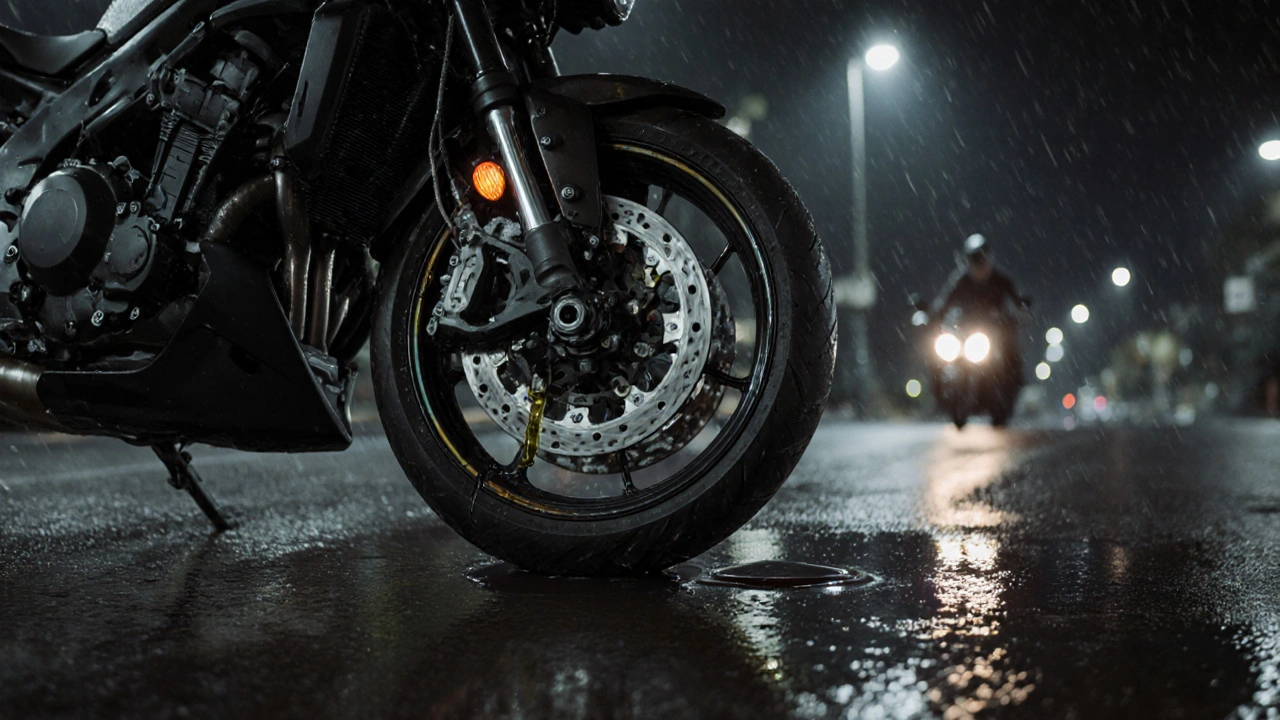

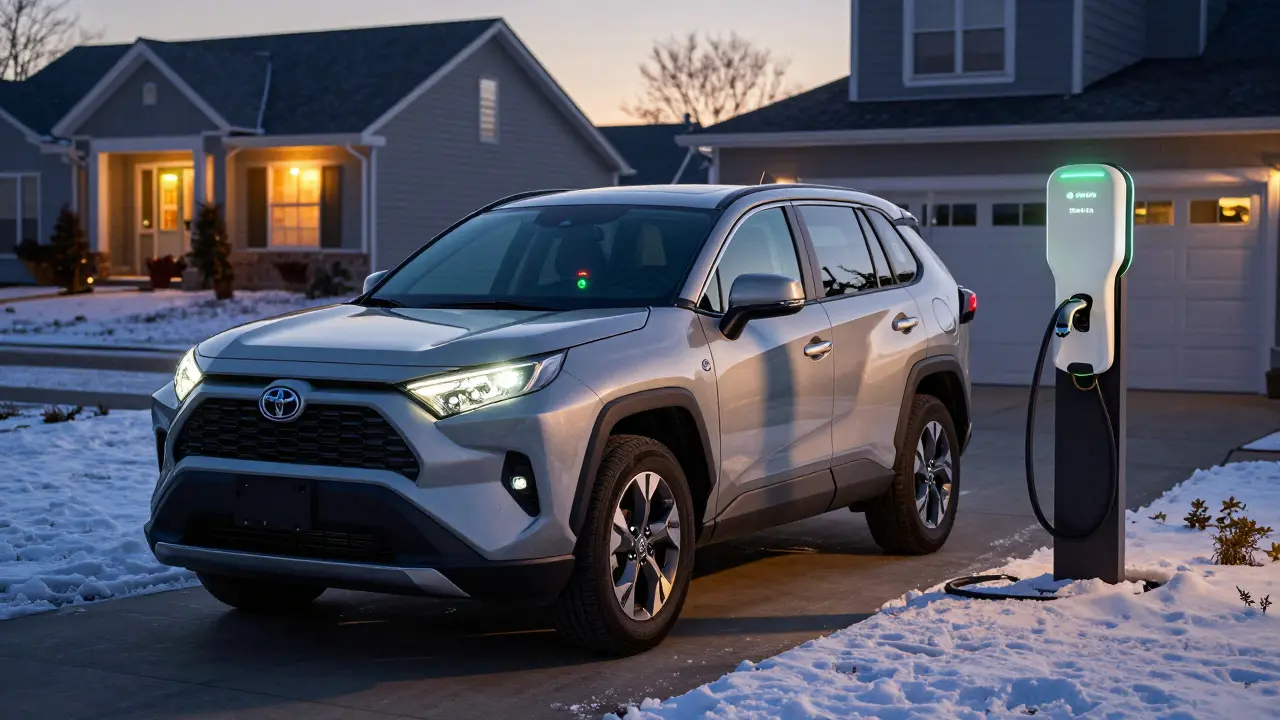

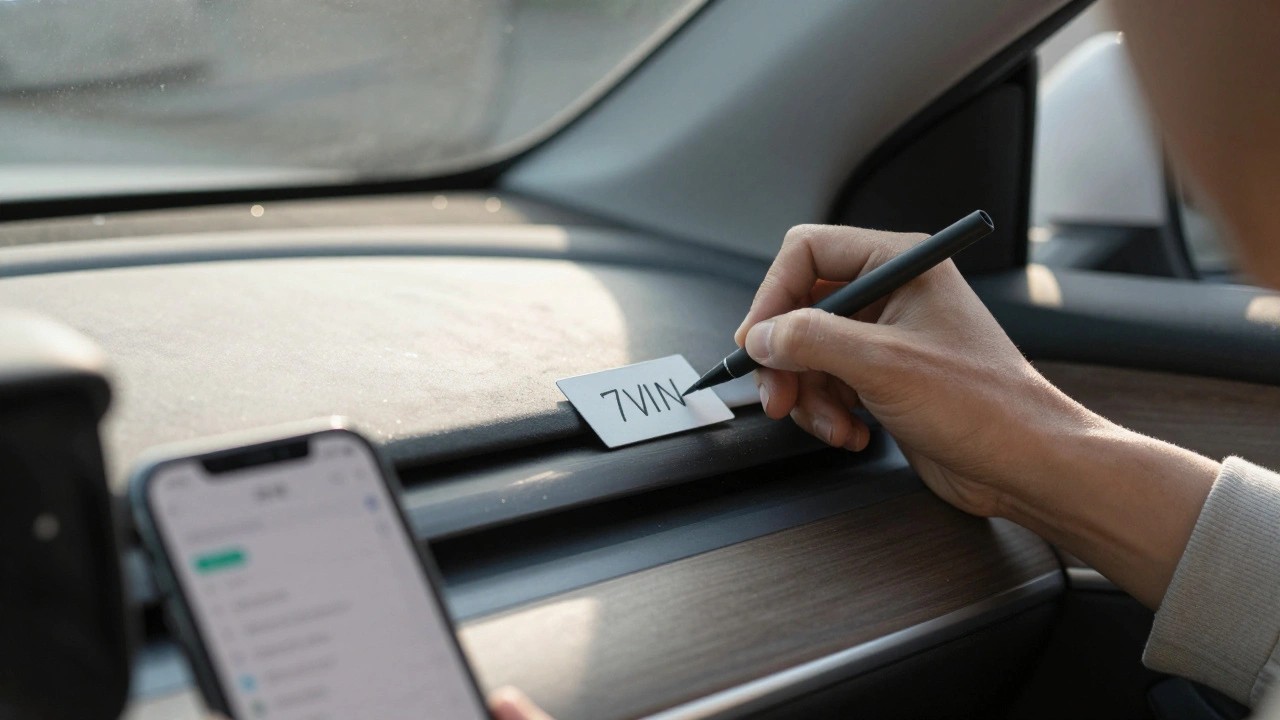
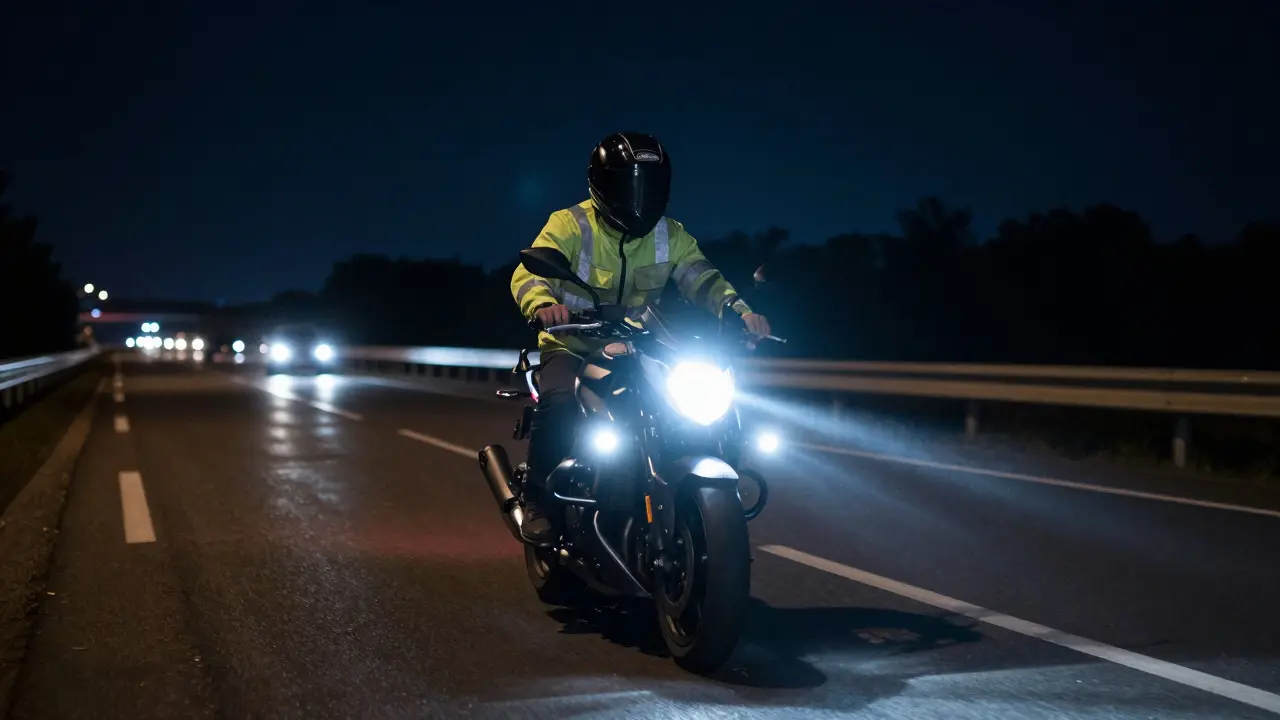
sonny dirgantara
November 9, 2025 AT 01:04just checked my vin and my bike’s got a recall from 2021. never got a letter. guess i’m lucky i stumbled on this post.
Johnathan Rhyne
November 10, 2025 AT 13:27Oh please. Another ‘check your VIN’ sermon. You know what’s *really* dangerous? People who think a recall is a magic bullet. My cousin’s 2018 Ducati had a ‘service bulletin’ for a faulty throttle cable-dealer said ‘it’s not a recall, so we don’t have to fix it.’ He got rear-ended because it stuck open. Guess what? The manufacturer never even *acknowledged* the pattern until 37 complaints hit NHTSA. So no, checking your VIN isn’t enough. You gotta be a pain in the ass. Call. Email. Complain. Again. And again. And then file a damn FOIA request if you have to.
Salomi Cummingham
November 12, 2025 AT 10:54Thank you for writing this. I’ve been riding for 14 years and I’ve seen too many friends dismiss recalls because ‘it’s just a bike.’ But when your brake caliper cracks mid-corner on a highway exit, it’s not ‘just a bike’ anymore. I had the exact same fuel line issue mentioned-chafed against the frame, smelled like burnt plastic after every ride. Took it to the dealer, they shrugged. So I emailed the manufacturer directly with photos and a video. Two weeks later, a recall notice dropped. I didn’t get a loaner, but they did cover the repair. Don’t wait for permission to care about your safety. If you feel it in your bones that something’s off? Trust that. Document it. Push. Because the system won’t protect you unless you make it uncomfortable for them to ignore you.
Gina Grub
November 13, 2025 AT 18:22Recall culture is performative safety. Manufacturers issue recalls like PR stunts-not moral obligations. The real issue? They weaponize ‘service bulletins’ to avoid accountability. It’s a legal loophole designed to absolve them of liability while keeping riders in the dark. And let’s be real: if your bike’s got a defect that’s statistically linked to crashes, it’s a recall. Period. The fact that companies get to decide what’s ‘serious enough’ to warrant notification is a grotesque failure of regulation. NHTSA’s too underfunded to enforce. So we’re left with a system where safety is optional unless you’re loud enough.
Andrew Nashaat
November 15, 2025 AT 06:34Wait-wait-wait. You said ‘recalls don’t expire’? That’s technically true-but you’re forgetting the statute of limitations on liability claims. If you’re injured by a defect that was recalled five years ago, you can’t sue unless you can prove the manufacturer *knew* about it before your accident. And good luck with that. Most companies bury internal emails, and if they didn’t issue a recall? You’re SOL. Also: ‘free repair’? Only if the dealer hasn’t gone out of business. I had a 2019 Honda recalled for a steering head bearing-dealer said ‘we don’t have the part anymore.’ No loaner. No refund. No recourse. So don’t just ‘check your VIN.’ Check your state’s lemon law. Check your insurance policy. And if you’re still riding that bike? Wear a helmet. Because the system’s rigged.
Lauren Saunders
November 16, 2025 AT 04:38How quaint. You all treat motorcycles like fragile porcelain dolls. The real problem isn’t recalls-it’s the fact that people buy bikes they can’t handle. I’ve seen 19-year-olds on 1000cc sportbikes with zero training, then blame the manufacturer when they wipe out. Recalls are a band-aid on a systemic issue: irresponsible ownership. If you’re riding a bike that’s been recalled, maybe ask yourself why you didn’t research it before buying. And don’t get me started on ‘service bulletins’-they’re not loopholes, they’re *nuances*. The law doesn’t require manufacturers to fix every minor wear issue. But somehow, we’ve turned every vibration into a death sentence.
Jawaharlal Thota
November 17, 2025 AT 05:07I’ve worked as a mechanic in Delhi for over 20 years, and I’ve seen this exact pattern in Indian-made bikes too. The same brake caliper issues, the same fuel line chafing. But here’s the difference: in India, there’s no NHTSA. No official recall system. Riders find out through word of mouth, or when their bike catches fire at a traffic light. I’ve had customers come in with bikes that were recalled in the US but never even offered in our market. They bought them secondhand from travelers. So when you say ‘check your VIN’-that’s a luxury. Most riders here don’t even know what a VIN is. The real solution isn’t better notices-it’s better access to information, affordable repairs, and education. Safety shouldn’t depend on your country or your bank account.
Nathan Jimerson
November 18, 2025 AT 22:45My 2020 Yamaha got recalled for a faulty throttle sensor. Took it in, got it fixed in two hours, no charge. The guy at the shop even gave me a free air filter. It’s not perfect, but when companies do right by riders, it matters. Don’t let the cynics make you think all manufacturers are bad. Some are trying. And if you get a recall notice? Take it as a gift-not a burden. Fix it. Ride safe. And if you can, tell someone else to check theirs too.